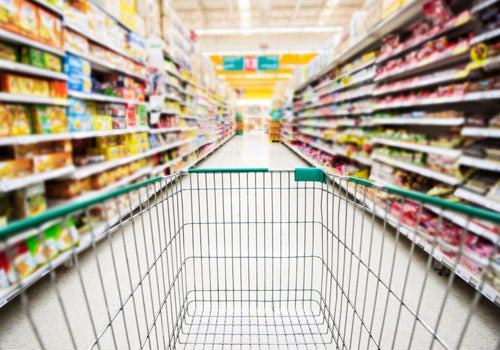
Added sugar found in two-thirds of packaged foods
Even baby food and products marketed as healthy alternatives often contain added sugar, study finds

Even baby food and products marketed as healthy alternatives often contain added sugar, study finds
By Christine Bezruki Faculty of Applied Health Sciences
Photo: bugphai/iStock/Thinkstock
There are the obvious offenders— candy, soft drinks and baked goods. But what about that granola bar or that container of yogurt?
According to a Waterloo study, added sugar is found in two-thirds of all packaged foods, including many products marketed as healthy alternatives. Half of all baby foods contain added sugar and often in alarming amounts. The average baby food with added sugar contains four teaspoons, or the equivalent of four cubes.
“It’s more difficult to avoid sugar than you think,” said David Hammond, a professor in the School of Public Health and Health Systems who analyzed 40,000 packaged foods offered by a major Canadian grocery chain. “In many cases, sugar is found in products you wouldn’t suspect and under names you wouldn’t recognize.”
The World Health Organization (WHO) recommends limiting consumption of added sugars to a maximum of 10 per cent of daily calories. On average, Canadians consume around 11 to 13 per cent— not including sugars added from naturally derived sources like fruit juice and honey.
“Consumers have several misunderstandings about sugars and sugar processing,” said Hammond. “Differences in labelling regulations also add to the confusion.”
The sugar content in beverages is particularly high, including for juices and flavoured dairy products.
“There is a public perception that sugar content from fruit juice is less of a health risk than that of soft-drinks, which is not true,” said Hammond. “It is processed the same way in our bodies and labels should reflect that.”
The United States will soon list the amount of added sugar on food labels; Health Canada is also redesigning nutrition labels, but decided against providing added sugar levels on pre-packaged foods.
“Most people want to know how much added sugar is in their foods— the decision not to list added sugars is a missed opportunity,” said Hammond. “That’s a concern for public health.”
High intake of added sugar is linked with obesity, diabetes, heart disease, stroke and cancer. In Canada alone, 3.5 million people live with Type II diabetes and 5.3 million adults struggle with obesity. Cancer continues to remain the leading cause of death.
“There is an immediate need to reduce excess sugar intake in our diet and the best place is to start is to reduce our liquid calories. We need to go back to eating our fruit instead of sucking it through a straw,” said Hammond.

Read more
Here are the people and events behind some of this year’s most compelling Waterloo stories

Read more
Researchers awarded funding to investigate ecology, climate change, repatriation, health and well-being through cultural and historical lens

Read more
15 University of Waterloo researchers have been named to the annual Highly Cited Researchers™ list for significant contributions to their specific fields of research
The University of Waterloo acknowledges that much of our work takes place on the traditional territory of the Neutral, Anishinaabeg, and Haudenosaunee peoples. Our main campus is situated on the Haldimand Tract, the land granted to the Six Nations that includes six miles on each side of the Grand River. Our active work toward reconciliation takes place across our campuses through research, learning, teaching, and community building, and is co-ordinated within the Office of Indigenous Relations.